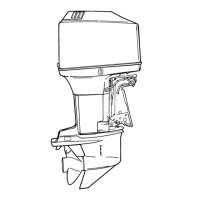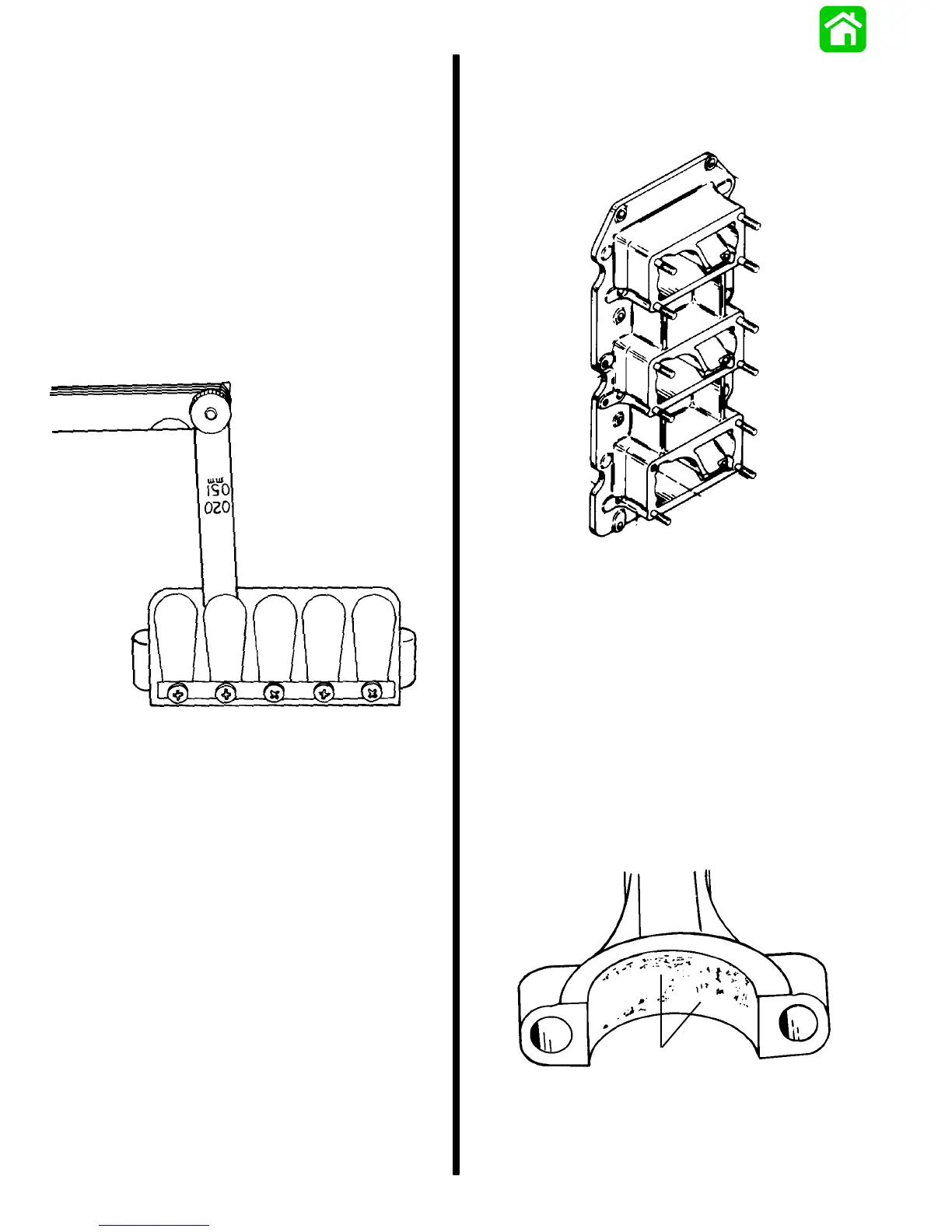4A-30 - POWERHEAD 90-824052R3 JUNE 2002
Reed Block Assembly
IMPORTANT: DO NOT remove reeds from reed
blocks, unless replacement is necessary. DO
NOT turn used reeds over for re-use. Replace
reeds in sets only.
1. Thoroughly clean gasket surfaces of reed blocks
and reed block housing. Check for deep grooves,
cracks and distortion that could cause leakage.
Replace parts as necessary.
2. Check for wear (indentations) on face of each
reed block. Replace block(s), if reeds have made
indentations.
3. Check for chipped and broken reeds.
51851
Allowable reed opening is 0.020 in. (0.51mm) or less.
Replace reeds if either reed is standing open more
than 0.020 in. (0.51mm).
Reed Block Housing
1. Check rubber bleed hoses. Replace any hose
that is cracked, cut or deteriorating.
2. Check operation of bleed system check valves in
reed block housing. If valves are working
properly, air can be drawn thru check valves “one
way” only. If air can pass thru a check valve both
ways, valve is not working properly and must be
replaced.
3. Check that bleed system check valves are
pressed tight into reed housing.
4. Inspect passages in reed block housing to be
sure that they are not obstructed.
Connecting Rods
1. Check connecting rods for alignment by placing
rods on a surface plate. If light can be seen under
any portion of machined surfaces, if rod has a
slight wobble on plate, or if a 0.002 in. (0.051mm)
feeler gauge can be inserted between any
machined surface and surface plate, rod is bent
and must be discarded.
2. Overheating: Overheating is visible as a bluish
bearing surface color that is caused by inade-
quate lubrication or excessive RPM.
3. Rust: Rust formation on bearing surfaces
causes uneven pitting of surface(s).
a
51853
a - Pitting

